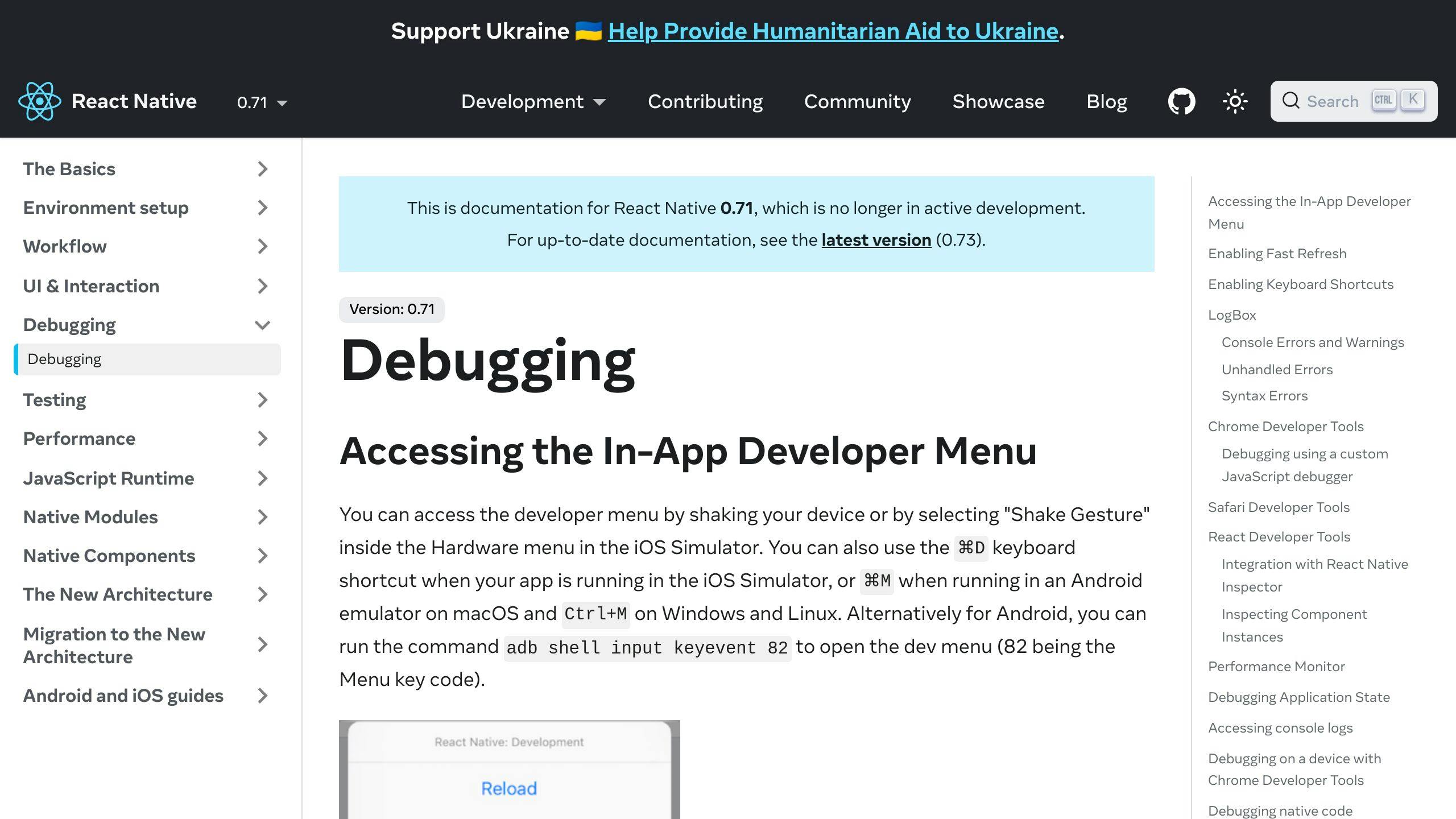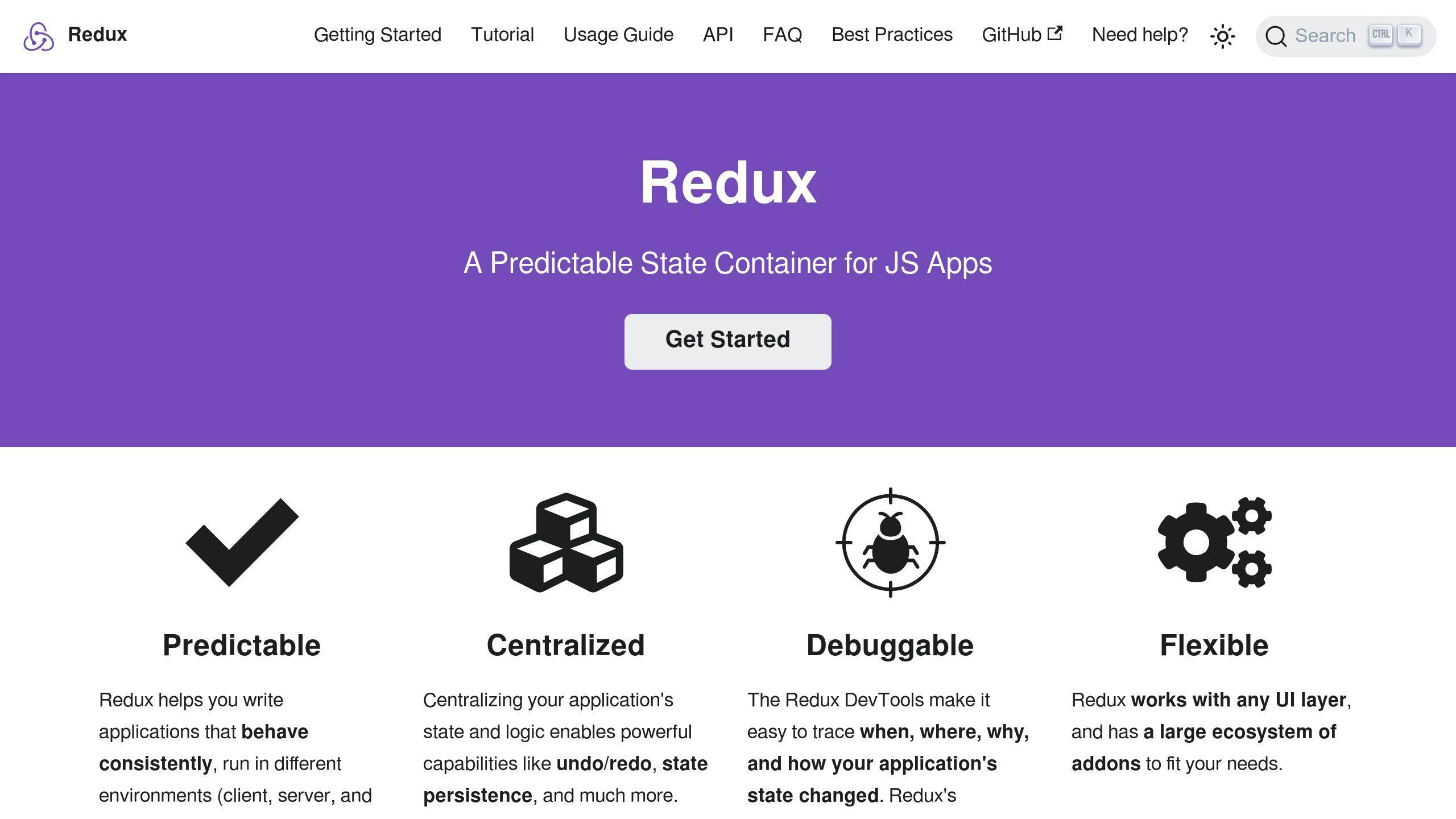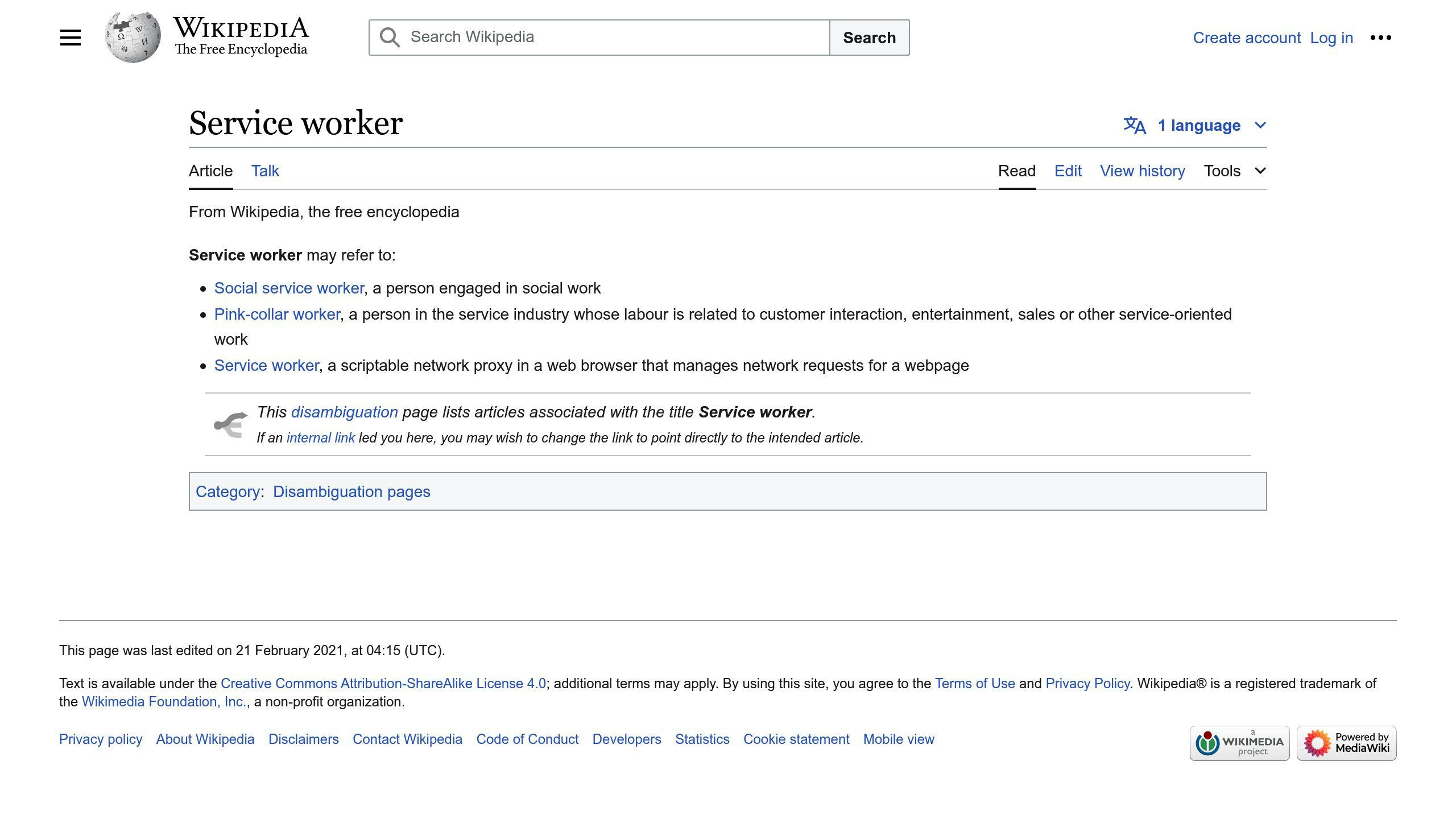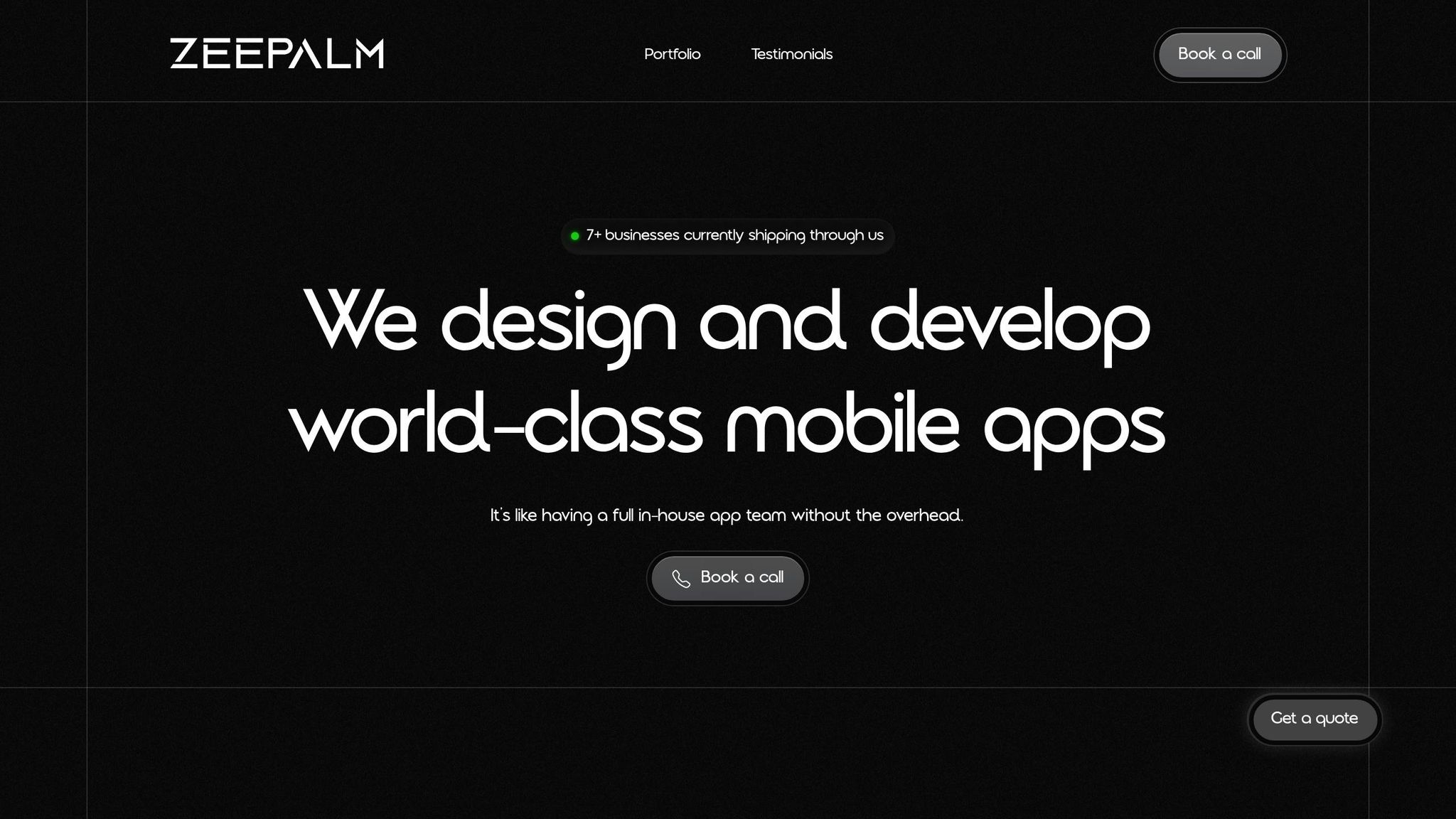If you're diving into the world of React Native for mobile app development, you're in the right place. Whether you're aiming to build apps for both iOS and Android with a single codebase, enhance app performance, or navigate the rich ecosystem of tools and libraries available, this guide has got you covered. Here's a quick rundown to get you started:
- React Native enables cross-platform development, allowing you to write your app once and deploy it on both iOS and Android.
- Essential tools like Expo CLI streamline your development process, while libraries like React Navigation and Redux help in managing navigation and state.
- Understanding how to set up your development environment with Node.js, Watchman, JDK, Android Studio, and Xcode is crucial.
- Adopt best practices for optimizing performance, writing clean code, and debugging effectively to enhance your app's quality.
- Be prepared to tackle common challenges such as integrating with native code and optimizing app performance.
With React Native, you're equipped to craft high-performance, visually appealing apps that provide a native-like user experience across multiple platforms. Let's dive into the essentials to kickstart your journey as a React Native mobile app developer.
What is React Native?

React Native is a free tool for making mobile apps on both iPhones and Android phones using JavaScript and React. Think of it as a way to write your app once and have it work on two different types of phones. This saves a lot of time and money compared to making a separate app for each phone.
It combines web app development with mobile app development, using parts that match the phone's own UI elements. This means the apps you build will not only work well but also look and feel like they were made specifically for that phone, using languages like Swift for iOS or Java for Android.
How React Native Works
React Native uses a simple three-part system:
- JavaScript Layer: This is where you write your app's logic and design its look using components.
- Bridge: This acts as a messenger between the JavaScript layer and the phone's own system, translating between the two.
- Native Layer: This is where the phone's system lives, handling how your app looks on the screen and interacts with the phone's features.
Here's what happens:
- You write the app using JavaScript.
- When the app starts, the JavaScript code runs.
- The bridge sends messages between the JavaScript and the phone's system.
- The phone's system shows your app on the screen and uses its features.
- When you update something in JavaScript, the app's look on the screen can change.
This setup lets React Native apps use the phone's own system for a smooth experience while being made with web development methods.
Components of React Native
Here are some important parts of React Native:
- React: This part deals with showing the app on the screen and managing data.
- Native Modules: These let your app use the phone's features, like storing data or finding your location.
- Native UI Components: Basic building blocks like View, Text, Image that turn into the phone's UI elements.
- JavaScript Runtime: This runs the JavaScript code and talks to the phone's system. For example, JSC runs on iPhones and Chrome V8 on Android phones.
So, React Native lets you use JavaScript to make mobile apps that look and feel like they were made for the phone, using the phone's own UI elements and features.
Setting Up the Development Environment
Installing Requirements
To get ready for making React Native apps, you need to install a few things:
- Node.js: This is the engine that runs the JavaScript code for React Native. Get the latest stable version from nodejs.org.
- Watchman: Helps React Native notice when you make changes to your files, which makes things faster. You can install it with
brew install watchmanon macOS or check the Watchman docs for other systems. - Java SE Development Kit (JDK): Needed for making and running Android apps. Make sure to get version 8 or newer from AdoptOpenJDK.
- Android Studio: The main program for creating Android apps. Download it here.
- Xcode: Used for making apps for iPhones and Macs. Get it from the Mac App Store or Apple Developer site.
Creating Your First App
After setting everything up, you can make your first React Native app:
- Put Expo CLI on your computer:
npm install -g expo-cli
- Start a new project:
expo init my-first-app
- Go into your new app's folder and open it:
cd my-first-app
expo start
- Use a device or an emulator to look at the default welcome screen of React Native.
This shows that Expo and React Native are ready for you to start making apps.
Installing Expo CLI
Expo CLI is a tool that makes working with React Native easier. It helps you create projects, run your apps, and update them easily.
To install, just type:
npm install -g expo-cli
Now, you can use expo commands in your terminal to work on React Native apps.
Must-Have Tools and Libraries
When making mobile apps with React Native, using the right tools and libraries can make your job a lot easier. Here, we'll talk about some key tools you should know about. These help with fixing mistakes, setting up your project, moving around in your app, and managing data.
React Native Debugger

React Native Debugger is super useful for finding and fixing problems in your React Native apps. It lets you:
- Look at and change your app's data while it's running
- Check network requests to see what your app is sending and receiving
- Debug state management tools like Redux
It's like having a magnifying glass for your app, making it easier to spot and solve issues.
Expo

Expo is a tool that makes working with React Native a lot smoother by providing:
- A quick way to start new projects
- Easy access to phone features like the camera or location
- The ability to update your app without going through the app store
Expo helps you test and share your app more easily. It's like a Swiss Army knife for React Native app developers.
React Navigation

This library helps you move between screens in your app. It offers:
- Different ways to organize your app's screens
- Smooth animations when switching screens
- Tools for passing data between screens
React Navigation makes it easier to manage how users move through your app.
Redux

Redux is a tool for managing your app's data. It helps by:
- Keeping all your data in one place
- Using actions to change data
- Using reducers to control how actions change data
Redux is great for making sure your app's data is handled in a predictable way, especially as your app grows.
These tools are just the beginning, but they're a good starting point for making your React Native app development smoother and more efficient.
Following Best Practices
Optimizing Performance
When making React Native apps, it's key to make sure they run smoothly. Here's how:
- Avoid unnecessary re-renders: Only update parts of your app when needed. This stops the app from redoing work it doesn't have to. Tools like
React.memoanduseMemocan help. - Implement list virtualization: For long lists, show only the parts users can see to make scrolling smoother. Instead of using basic
VieworScrollView, go forFlatListorSectionList. - Leverage native functionality: Use built-in components instead of making your own for better speed.
- Minify code: This means making your code smaller by removing parts you don't use. Tools like the Metro bundler or Expo build service can do this.
- Test performance: Use tools like React Native Debugger or App Center to find and fix slow spots.
Writing Clean Code
Good code makes your app better:
- Adhere to style guides: Follow rules, like Airbnb's, to keep your code looking the same. Tools like ESLint and Prettier can help.
- Modularize code: Break your code into small, focused parts that you can use again.
- Type check: Use TypeScript to catch mistakes early.
- Peer review code: Have someone else look at your code before it goes live.
- Document thoroughly: Write comments for parts of your code that might confuse others.
Debugging Effectively
Finding and fixing problems is crucial:
- React Native Debugger: Lets you look at your app's UI and data as it runs.
- Expo Dev Tools: Comes with tools for checking logs and performance.
- Flipper: A tool by Facebook to help you look at layouts, network calls, and more.
- Reactotron: A desktop app for tracking and fixing issues in React Native apps.
By sticking to these best practices, you'll make your app better and your life easier in the long run.
sbb-itb-8abf120
Common Challenges and Solutions
Integration with Native Code
Sometimes, you might need to use the specific features of iPhones or Android phones in your app. This can be tricky because it involves using the languages and tools those phones understand, like Java for Android or Swift for iOS.
Here's how to handle it:
- If you need to use phone-specific features not already available in React Native, you might have to create custom parts using the phone's coding languages.
- Make sure you set up your project correctly in Android Studio for Android phones or Xcode for iPhones.
- When your app and the phone's system need to talk to each other, they use a common language, like JSON, to understand each other.
Tips:
- Look for ready-made components that do what you need, so you don't have to start from scratch.
- Check the React Native guides for making custom parts for Android and iOS.
- Stick to common data formats like JSON for easier communication between your app and the phone.
Dealing with Bugs
Bugs can pop up, but here's how to manage them:
- Prevent: Use good coding practices, review code with your team, and test your app.
- Identify: Use tools to find where bugs are happening. Keep an eye on how your app is doing with tools like App Center.
- Resolve: Figure out why the bug is happening, whether it's in your code or something else. Use guides and ask for help if you're stuck.
- Improve: Learn from bugs to make your app better. Add tests to make sure fixes work.
Dealing with bugs carefully can make your app more reliable.
Optimization and Performance
If your app is slow, users might not like it. Here are some ways to make your app run better:
- Check your app's speed with tools to find slow spots.
- Make images smaller and use formats that don't take up much space.
- Only show what's needed for long lists, so your app doesn't slow down.
- Be smart about updates to avoid doing the same work over and over.
- Save data so your app doesn't ask for the same information multiple times.
- Spread out work so the app doesn't get bogged down all at once.
- Watch for parts of your app that update too often and adjust them.
Keeping an eye on performance from the start can help your app stay fast and enjoyable for users.
Conclusion
As we finish our guide on making mobile apps with React Native, let's go over some important points:
Cross-Platform Capabilities Unlock Efficiency
React Native lets us write apps in JavaScript that work on both iPhones and Androids. This means we can use the same code for both, which saves a lot of time compared to making two different apps.
Vibrant Community and Robust Tooling
React Native has a big community that helps out with plugins, guides, and support. Tools like Expo, React Native Debugger, and AppCenter make our work smoother.
Write Once, Render Natively
React Native mixes web and mobile app making. Our apps look and work great on phones using web code, which means they're fast and can use the phone's features.
Scalable Apps Through Reusable Components
We build apps with parts that we can use again. This makes it easier to handle big apps and keep them organized.
Rapid Development With Hot Reloading
React Native's hot reloading lets us see changes right away without starting over. This quick feedback helps us make better apps faster.
React Native is always getting better, with new features for easier app making and cloud support. Keeping up with the latest updates means we can make even better apps.
By learning the basics of React Native, we're ready to make great mobile apps for both Android and iOS.
Related Questions
Is React Native good for mobile app development?
Yes, React Native is a great choice for making mobile apps. Here's why:
- Cross-platform: You can make one app that works on both iPhones and Android phones. This saves a lot of time and effort.
- Native performance: The apps run smoothly and look good, just like apps made specifically for those phones.
- Reusable components: You can use the same pieces of your app in different places, making app building faster.
- Live reloading: You can see changes you make right away, which helps you work faster.
- Community: There's a big group of people using React Native, so it's easy to find help and resources.
React Native is a smart pick for making quality apps without spending too much time or money.
What are the requirements for React Native mobile?
You'll need a few things to start making apps with React Native:
- Node.js 10 or newer
- Watchman for keeping track of file changes
- Java SE Development Kit (JDK) 8 or newer
- Android Studio and Android SDK 6.0 or newer for Android apps
- Xcode 11 or newer and CocoaPods for iOS apps
- A physical device or an emulator to test your app
- A text editor like Visual Studio Code
- Git and command line skills
It's important to set up your environment correctly. Check out the React Native official development environment setup guide for detailed steps. Keeping everything up to date is also a good idea.
What are the prerequisites for React Native app development?
Before you start, you should know:
- JavaScript ES6 or newer
- Basic React ideas like components and state
- Some knowledge of Android and iOS platforms
- How to use tools like Babel and Webpack
- Basic design knowledge for mobile apps
You don't need to be an expert in mobile app development, but understanding both web and mobile basics will help a lot.
What tool and skill set do you need to develop a mobile app in React Native?
To make a mobile app in React Native, you should be good at:
- JavaScript and ES6
- React basics
- Using React Native for mobile-specific features
- Debugging with tools like React Native Debugger
- Managing app data with things like Redux or React Query
- Using React Navigation for moving around the app
- Designing with UI libraries
- Connecting your app to the internet
- Basic Git skills
- Understanding iOS and Android basics
These skills will help you build most types of apps. If you want to make something more specialized, like a game or a shopping app, you might need to learn a few more things.












